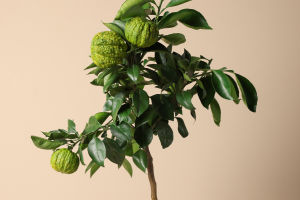Seedlings are the first visible signs of plant life, emerging from seeds to begin their journey toward maturity. For gardeners, farmers, and plant enthusiasts, seedlings represent hope, growth, and the promise of a thriving garden or crop.
Dear Lykkers! Understanding the development of seedlings and their specific needs is crucial for ensuring healthy plant growth.
What is a Seedling?
A seedling is a young plant that has just germinated and emerged from its seed. At this stage, the plant is extremely vulnerable but also rapidly developing. The seedling typically consists of three main parts:
Cotyledons: These are the first leaves that appear on a seedling, often known as “seed leaves.” They provide essential nutrients to the young plant before the true leaves develop and begin the process of photosynthesis.
Stem (Hypocotyl): The stem supports the cotyledons and the emerging leaves, helping to push the seedling above the soil. It acts as a conduit, transporting water and nutrients from the roots to the upper parts of the plant.
Roots: At the base of the seedling, the root system starts to develop. Roots anchor the plant into the soil and absorb water and essential nutrients, which are vital for growth.
The Stages of Seedling Development
The life of a seedling is divided into several key stages:
1. Germination
The process begins with germination, where a seed absorbs water, swells, and breaks through its outer shell. This is triggered by the right combination of moisture, temperature, and sometimes light. The root (radicle) is the first to emerge, followed by the shoot that pushes upward.
2. Emergence
Next, the seedling breaks through the soil surface. At this stage, cotyledons appear, which will soon be replaced by the first set of true leaves. The seedling is now ready to start producing its own food through photosynthesis.
3. Growth and Maturation
During this stage, the seedling focuses on developing its root system, strengthening its stem, and growing more leaves. This growth continues until the plant is strong enough to be transplanted or continue growing in its current location.
Factors Affecting Seedling Growth
The growth and health of a seedling depend on several crucial factors:
1. Light
Seedlings require a specific amount of light to thrive. Insufficient light can cause them to become “leggy,” with long, weak stems. Most seedlings need 12-16 hours of light per day; using a grow light can help provide adequate light for indoor plants.
2. Water
Proper watering is essential, as seedlings are sensitive to both overwatering and underwatering. The soil should remain moist but not waterlogged. Too much water can lead to root rot, while too little can cause the seedling to wilt and die.
3. Temperature
Seedlings prefer consistent temperatures. Most thrive in a range between 65-75°F (18-24°C). Sudden temperature changes or exposure to extreme cold can stunt growth or kill the young plant.
4. Soil and Nutrients
Rich, well-draining soil is vital for healthy seedling growth. Starting with a sterile seed-starting mix can prevent diseases. As seedlings grow, they need nutrients, particularly nitrogen, phosphorus, and potassium, which can be provided through a balanced fertilizer.
Common Problems with Seedlings
Even with the best care, seedlings can face challenges:
1. Damping Off
This is a fungal disease that affects seedlings, causing them to collapse suddenly. It usually results from overwatering, poor air circulation, or contaminated soil. To prevent damping off, keep seedlings in well-ventilated areas and avoid overwatering.
2. Leggy Growth
Seedlings become leggy when they don’t get enough light, stretching towards the light source, resulting in thin, weak stems. Placing them in a brighter location or using artificial light can help.
3. Pests
Seedlings can be vulnerable to pests like aphids, spider mites, and fungus gnats. Regular inspection and natural remedies like neem oil or insecticidal soap can help control these pests.
Caring for Seedlings
To care for seedlings effectively:
Provide consistent light: Ensure they get adequate sunlight or use grow lights to supplement.
Maintain proper moisture: Keep the soil consistently moist, but avoid overwatering.
Use a gentle breeze: A fan set to low can help strengthen stems by simulating natural wind.
Thin seedlings: If multiple seeds germinate in one spot, thin them out to avoid overcrowding and competition for nutrients.
Seeds and Germination Explained
Video By Science Sauce
Transplanting Seedlings
When seedlings have grown large enough, typically when they have 2-4 sets of true leaves, they are ready to be transplanted into a larger pot or directly into the garden. Harden off seedlings by gradually exposing them to outdoor conditions over a week to prevent transplant shock.
Seedlings are the beginning of a plant’s life, requiring careful attention and care to thrive. By understanding their development stages and providing the right conditions, you can ensure your seedlings grow into strong, healthy plants. So, start planting and watch your seedlings turn into a lush, vibrant garden!


